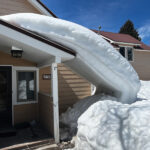Whether the goal is LEED certification or reducing operating costs, most building material specifiers today are called upon to research and specify green products for their projects. However, with a myriad of unsubstantiated and conflicting information available, the task can be challenging. It can be difficult for specifiers to distinguish products that have some valid environmental claims (such as energy savings or sustainable materials) but could have a negative environmental impact overall when the product’s complete life cycle is taken into account.
To help provide cradle-to-grave data, full transparency and third-party verification of products, Environment Product Declarations (EPDs) are becoming the standard for comparing and selecting products that meet the environmental, health and performance goals of building designs. These eco-labels are similar to a nutrition label on a food product, providing specifiers and buyers with an effective, standardized framework for making informed product comparisons.
The Metal Construction Association (MCA) has developed EPDs for three products: metal composite materials, insulated metal panels and rollformed steel panels for roofs and walls. These EPDs are available for download at www.metalconstruction.org/EPDs.
EPDs provide comprehensive environmental impact data that cover the cradle-to-gate assessment of the various products. This includes raw material extraction, transportation, manufacturing and packaging.
Specifically, metal specifiers can now assess the following characteristics for metal panels using these new EPDs from MCA:
- Global Warming Potential: The long-term changes in global weather patterns, including temperature and precipitation that are caused by increased concentrations of greenhouse gases in the atmosphere.
- Ozone Depletion Potential: The destruction of the stratospheric ozone layer, which shields the earth from ultraviolet radiation that’s harmful to life, caused by human-made air pollution.
- Photochemical Ozone Creation Potential: When sunlight reacts with hydrocarbons, nitrogen oxides and volatile organic compounds, to produce a type of air pollution known as smog.
- Acidification Potential: The result of human made emissions that refers to the decrease in pH and increase in acidity of oceans, lakes, rivers and streams, and is a phenomenon that pollutes groundwater and harms aquatic life.
- Eutrophication Potential: Occurs when excessive nutrients cause increased algae growth in lakes, blocking the underwater penetration of sunlight needed to produce oxygen and resulting in the loss of aquatic life.
- Depletion of Abiotic Resources (Elements): The reduction of available non-renewable resources, such as metals and gases, due to human activity.
- Depletion of Abiotic Resources (Fossil Fuels): The decreasing availability of non-renewable, carbon-based compounds, such as oil and coal, due to human activity.
In addition, EPDs contain information about product definition, building physics, the basic material and its origin, product manufacture and processing, in-use conditions, as well as testing standards and verifications.
While individual manufacturers can provide EPDs for specific products, industry-wide EDPs- like those from MCA-use representative ranges from products assessed and tested from primary producers. Industry-wide EPDs can be used when there is not a manufacturer EPD.
Whether from a manufacturer or an industry organization such as MCA, the content of all EPD documents must be reviewed and registered by a program operator, such as UL Environment, ICC-ES, ASTM, NSF and others, and independently verified in accordance with relevant ISO standards. An life cycle assessment (LCA) practitioner analyzes the data from a LCA study, and a program operator reviews all the information and arranges for the final thirdparty verification.
EPDs allow architects and builders to easily choose products to suit each project or owner’s needs with the confidence that they are using complete and accurate information. In fact, LEED v4 encourages the use of products that supply EPDs by offering LEED points for their use.
To obtain a copy of the EPDs for metal composite panels, insulated metal panels and rollformed steel panels for roofs and walls, visit www.metalconstruction.org/EPDs or contact MCA at (847) 375-4718 or mca@metalconstruction.org.
—————————————————————————————————————–
Scott Kriner is the president of Green Metal Consulting Inc., Macungie, Pa., and a principal in RSK Avanti Partners LLC, Richardson, Texas. He is a LEED Accredited Professional (Operations and Maintenance) and wrote a book titled “Wait and See.” He also serves the Metal Construction Association as technical director.






